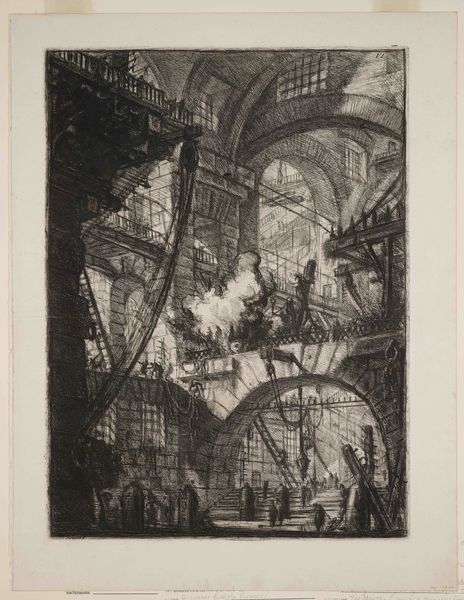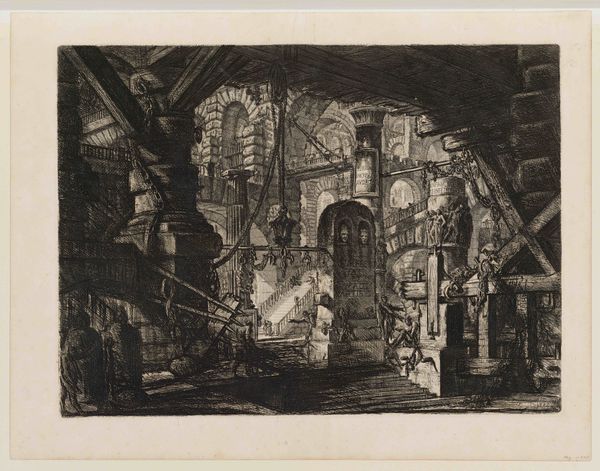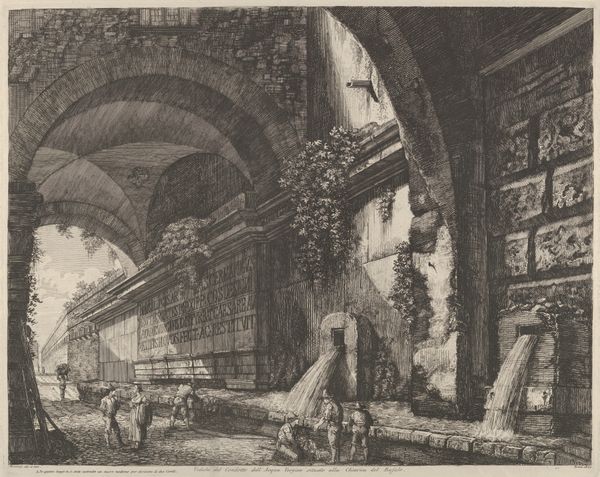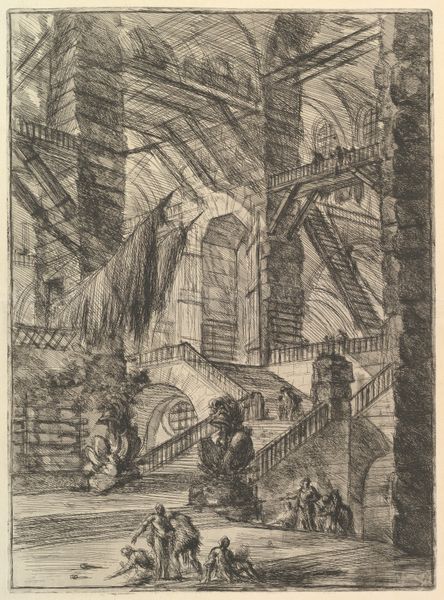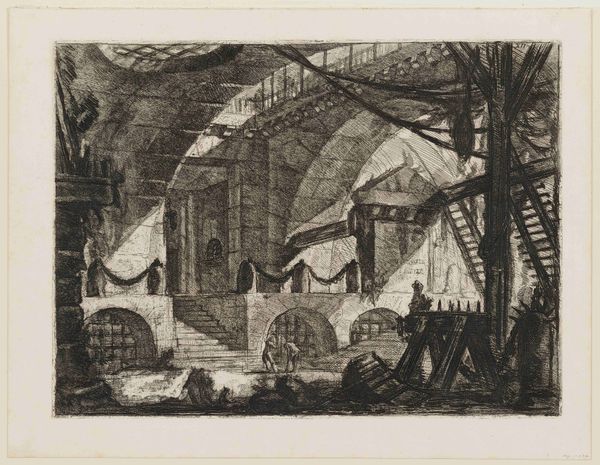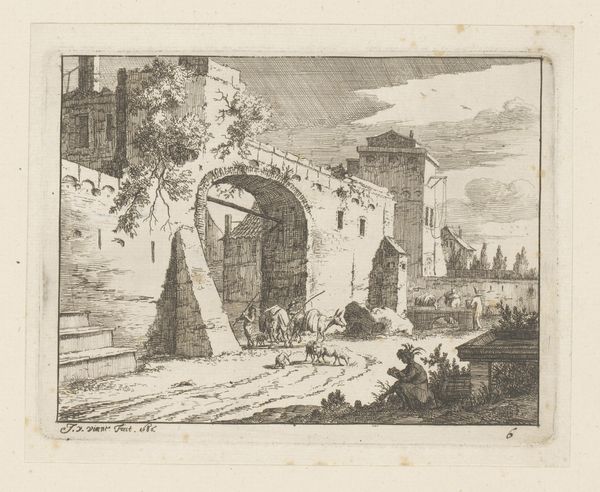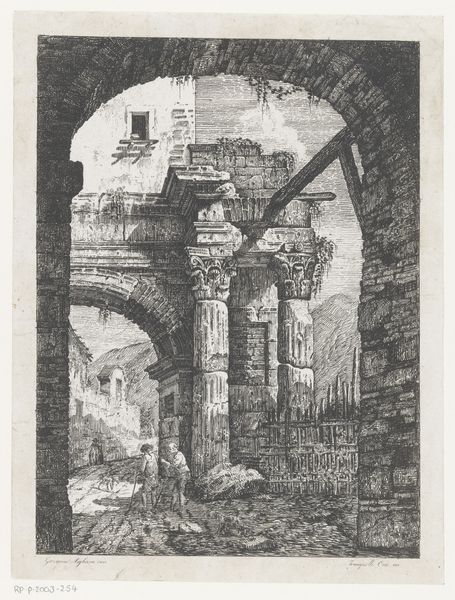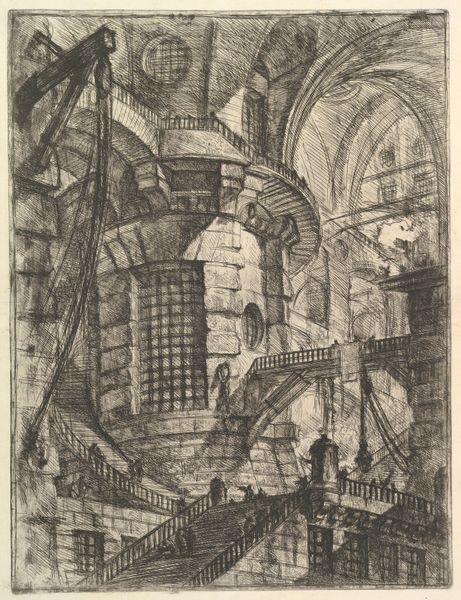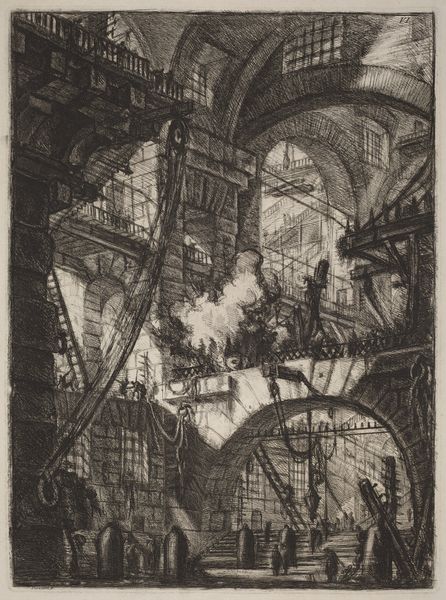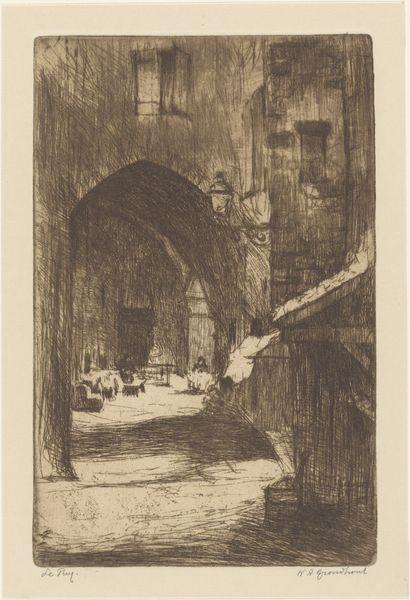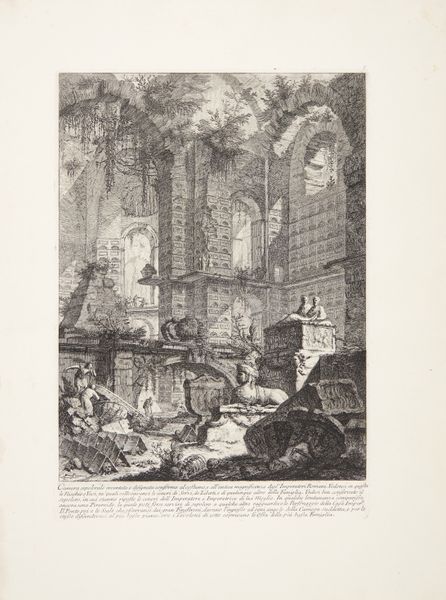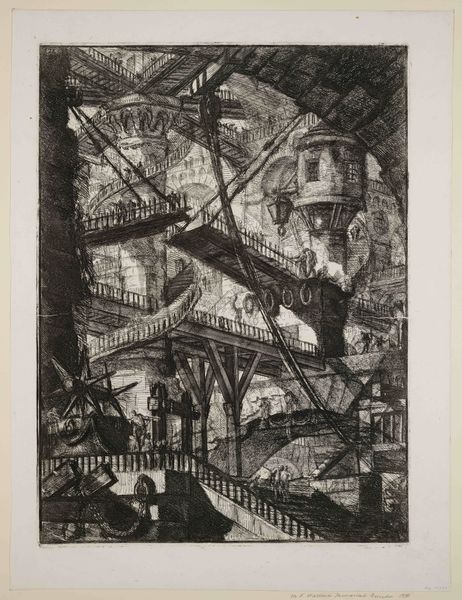
Dimensions: 21 9/16 x 15 13/16 in. (54.77 x 40.16 cm) (plate)
Copyright: Public Domain
Curator: So, here we have Giovanni Battista Piranesi's etching from around 1761, "The Staircase with Trophies," currently residing here at the Minneapolis Institute of Art. It's… striking, wouldn’t you say? Editor: Oh, overwhelmingly so. Dark, labyrinthine...almost like a nightmare made of architectural renderings. The sheer scale is dizzying, and there are figures throughout doing... things. Curator: It's Piranesi's imagining of ancient Rome. Notice how he plays with perspective? The architecture overwhelms the human figures. Etching, as a printmaking process, allowed him to create incredibly fine lines, those intricate details of the stone, that sense of vastness. Editor: It’s incredible what he achieved through the medium. But let's look at the actual labour involved. All those plates created in multiples and disseminated—art becoming, in a way, a commodity, echoing Rome itself! The etching transforms what was probably quite backbreaking labour. I imagine, the actual printmaking took more physical effort. Curator: Precisely! He was an architect as well, you know. There's this sense he is dreaming up worlds we can never fully inhabit, yet we are inexplicably drawn in. What is power and ruin after all. Editor: Which is interesting when we consider the 'trophies' element of the work's title! Here they become visual markers of status or domination achieved by past exploits. These objects transformed by their material— bronze perhaps, or marble and become synecdoche of past glories. Curator: Maybe it's about more than Roman nostalgia. He offers an eerie glimpse of the human condition: forever striving and building, only to see it all decay into something else entirely, making use of the very things they built for wealth and war into markers. Editor: Right! Well, the sheer craftsmanship evident speaks volumes, but so does its status as a print - reproduced, consumed. Curator: Thank you! You got me thinking; there is more going on beneath its glorious architectural displays. It definitely inspires to examine how something can be mass produced while being emotionally charged. Editor: Indeed. It's a potent cocktail: history, decay, artful labor... it leaves one pondering the nature of power itself.
Comments
minneapolisinstituteofart almost 2 years ago
⋮
Piranesi’s detailed studies of ancient Roman architecture sharpened his attention to building materials, such as the rivets in the huge center doors and the long, thin bricks of the arches on the second level.
Join the conversation
Join millions of artists and users on Artera today and experience the ultimate creative platform.
